- Home
- Charles Dickens
A Christmas Carol, the Chimes & the Cricket on the Hearth
A Christmas Carol, the Chimes & the Cricket on the Hearth Read online
Table of Contents
FROM THE PAGES OF A CHRISTMAS CAROL, THE CHIMES AND THE CRICKET ON THE HEARTH
Title Page
Copyright Page
CHARLES DICKENS
THE WORLD OF CHARLES DICKENS AND A CHRISTMAS CAROL, THE CHIMES AND THE CRICKET ...
Introduction
PREFACE
A CHRISTMAS CAROL, IN PROSE. - BEING A GHOST STORY OF CHRISTMAS
STAVE ONE. - Marley’s Ghost.
STAVE TWO. - The First of the Three Spirits.
STAVE THREE. - The Second of the Three Spirits.
STAVE FOUR. - The Last of the Spirits.
STAVE FIVE. - The End of It.
THE CHIMES. - A GOBLIN STORY OF SOME BELLS THAT RANG AN OLD YEAR OUT AND A NEW ...
FIRST QUARTER.
SECOND QUARTER.
THIRD QUARTER.
FOURTH QUARTER.
THE CRICKET ON THE HEARTH. - A FAIRY TALE OF HOME.
CHIRP THE FIRST
CHIRP THE SECOND
CHIRP THE THIRD
INSPIRED BY A CHRISTMAS CAROL
COMMENTS & QUESTIONS
FOR FURTHER READING
FROM THE PAGES OF A CHRISTMAS CAROL, THE CHIMES AND THE CRICKET ON THE HEARTH
Oh! But he was a tight-fisted hand at the grindstone, Scrooge! a squeezing, wrenching, grasping, scraping, clutching, covetous, old sinner! Hard and sharp as flint, from which no steel had ever struck out generous fire; secret, and self-contained, and solitary as an oyster. The cold within him froze his old features, nipped his pointed nose, shrivelled his cheek, stiffened his gait; made his eyes red, his thin lips blue; and spoke out shrewdly in his grating voice. A frosty rime was on his head, and on his eyebrows, and his wiry chin. He carried his own low temperature always about with him; he iced his office in the dog-days; and didn’t thaw it one degree at Christmas.
(from “A Christmas Carol,” page 10)
Scrooge having no better answer ready on the spur of the moment, said, “Bah!” again; and followed it up with “Humbug!”
(from “A Christmas Carol,” page 12)
In came little Bob, the father, with at least three foot of comforter exclusive of the fringe hanging down before him; and his threadbare clothes darned up and brushed, to look seasonable; and Tiny Tim upon his shoulder. Alas for Tiny Tim, he bore a little crutch, and had his limbs supported by an iron frame!
(from “A Christmas Carol,” page 53)
“God bless us every one!”
(from “A Christmas Carol,” page 55)
The Spirit stood among the graves, and pointed down to One.
(from “A Christmas Carol,” page 80)
“I will honour Christmas in my heart, and try to keep it all the year.”
(from “A Christmas Carol,” page 81)
“I am as light as a feather, I am as happy as an angel, I am as merry as a school-boy. I am as giddy as a drunken man. A merry Christmas to everybody! A happy New Year to all the world! Hallo here! Whoop! Hallo!” (from ”A Christmas Carol,“ page 82)
High up in the steeple of an old church, far above the light and murmur of the town, and far below the flying clouds that shadow it, is the wild and dreary place at night: and high up in the steeple of an old church, dwelt the Chimes I tell of.
(from “The Chimes,” page 93)
The New Year, like an Infant Heir to the whole world, was waited for, with welcomes, presents, and rejoicings.
(from “The Chimes,” page 117)
The kettle began it, full five minutes by the little waxy-faced Dutch clock in the corner, before the Cricket uttered a chirp.
(from “The Cricket on the Hearth,” page 182)
“Every man thinks his own geese swans.”
(from “The Cricket on the Hearth,” page 215)
“Friends, one and all, my house is very lonely to-night, I have not so much as a Cricket on my Hearth. I have scared them all away. Be gracious to me; let me join this happy party!”
(from “The Cricket on the Hearth,” page 264)
Published by Barnes & Noble Books
122 Fifth Avenue
New York, NY 10011
www.barnesandnoble.com/classics
A Christmas Carol was first published in 1843. The Chimes appeared the following
Christmas, and The Cricket on the Hearth, written in 1845, was published in 1846.
Published in 2004 with new Introduction, Notes, Biography, Chronology,
Inspired By, Comments & Questions, and For Further Reading
Introduction, Notes, and For Further Reading
Copyright © 2004 by Katharine Kroeber Wiley.
Note on Charles Dickens, The World of Charles Dickens and A Christmas Carol,
The Chimes and The Cricket on the Hearth, Inspired by A Christmas Carol,
and Comments & Questions
Copyright © 2004 by Barnes & Noble, Inc.
All rights reserved. No part of this publication may be reproduced or
transmitted in any form or by any means, electronic or mechanical,
including photocopy, recording, or any information storage and
retrieval system, without the prior written permission of the publisher.
Barnes & Noble Classics and the Barnes & Noble Classics colophon
are trademarks of Barnes & Noble, Inc.
A Christmas Carol, The Chimes and The Cricket on the Hearth
ISBN-13: 978-1-59308-033-4
ISBN-10: 1-59308-033-6
eISBN : 97-8-141-14319-1
LC Control Number 2003114357
Produced and published in conjunction with:
Fine Creative Media, Inc.
322 Eighth Avenue
New York, NY 10001
Michael J. Fine, President & Publisher
Printed in the United States of America
QM
5 7 9 10 8 6 4
CHARLES DICKENS
Born on February 7, 1812, Charles Dickens was the second of eight children in a family burdened with financial troubles. Despite difficult early years, he became the best-selling writer of his time.
In 1824 young Charles was withdrawn from school and forced to work at a boot-blacking factory when his improvident father—in fact, his entire family, except for him—was sent to debtor’s prison, where they remained for three months. Once they were released, Charles attended a private school for three years. The young man then became a solicitor’s clerk, mastered shorthand, and before long was employed as a Parliamentary reporter. When he was in his early twenties, Dickens began to publish stories and sketches of London life in a variety of periodicals.
It was the publication of The Pickwick Papers (1836-1837) that catapulted the twenty-five-year-old author to national renown. Dickens wrote with unequaled speed and often worked on several novels at a time, publishing them first in monthly installments and then as books. His early novels Oliver Twist (1837-1838), Nicholas Nickleby (1838-1839), The Old Curiosity Shop (1840-1841), and A Christmas Carol (1843) solidified his enormous, ongoing popularity. When Dickens was in his late thirties, his social criticism became biting, his humor dark, and his view of poverty darker still. David Copperfield (1849-1850), Bleak House (1852-1853), Hard Times (1854), A Tale of Two Cities (1859), Great Expectations (1860-1861), and Our Mutual Friend (1864-1865) are the great works of his masterful and prolific later period.
In 1858 Dickens’s twenty-three-year marriage to Catherine Hogarth dissolved when he fell in love with Ellen Ternan, a young actress. The last years of his life were filled with intense activity: writing, managing amateur theatricals, and
undertaking several reading tours that reinforced the public’s favorable view of his work but took an enormous toll on his health. Working feverishly to the last, Dickens collapsed and died on June 9, 1870, leaving The Mystery of Edwin Drood uncompleted.
THE WORLD OF CHARLES DICKENS AND A CHRISTMAS CAROL, THE CHIMES AND THE CRICKET ON THE HEARTH
1811 Jane Austen publishes Sense and Sensibility, arguably the first modern English novel.
1812 Charles John Huffam Dickens is born at Portsmouth to John and Elizabeth (née Barrow) Dickens. The government orders a group of Luddites, an organized band of laborers opposed to the industrialized machinery that threatens to replace them, to be shot down.
1817 The Dickens family moves to Chatham, in Kent. Charles begins reading the books in his father’s library; his favorites include the works of Miguel de Cervantes, Daniel Defoe, Henry Fielding, and Tobias Smollett.
1822 The Dickens family moves again, this time to Camden, in North London. Charles quickly and fastidiously learns the landscape of London, an invaluable resource for his later writing.
1824 Charles is sent to work at Warren’s Blacking Factory, a manufacturer of bootblacking. His father is arrested for debt and imprisoned for three months, and while the rest of the family stays with John Dickens in prison, Charles lodges elsewhere and continues pasting labels onto bottles of blacking at Warren’s.
1825 John Dickens retires on a naval pension, and Charles attends Wellington House Academy, a private school where he wins a prize in Latin.
1827 Dickens becomes a clerk in a solicitor’s office.
1829 After learning shorthand, Dickens establishes himself as a reporter for the law courts, Parliament, and various London newspapers. He meets Maria Beadnell and falls in love with her.
1831 Dickens joins the journalistic staff of the Mirror of Parliament; he transcribes speeches by the members of Parliament on such topics as factory conditions, penal reform, education reform, the Poor Law Commission, and the First Reform Bill of 1832.
1833 After four arduous years, Dickens’s affair with Beadnell dis solves in the face of her family’s disapproval. He publishes his first story, “A Dinner at Poplar Walk,” in the Monthly Magazine. The British Parliament passes the Factory Act, which regulates child labor and forces children to attend school until age thirteen.
1834 Dickens becomes a journalist for the Morning Chronicle, a job that requires frequent travel and attendance at political meetings. He continues to publish stories and sketches in periodicals. The Poor Law Amendment Act ends out-of-door relief (aid given to the poor in their own homes) and compels those in need of assistance to enter workhouses, where conditions are very harsh.
1835 Dickens becomes engaged to Catherine Hogarth, the daughter of George Hogarth, editor of the Evening Chronicle.
1836 Dickens writes in several different genres and achieves significant literary success. Adopting the pseudonym “Boz,” based on his pronunciation as a young child of Moses as “Boses,” Dickens publishes in volume form Sketches by Boz, a collection of his earlier writings. He marries Catherine Hogarth; the couple eventually will have ten children. Dickens becomes intensely and unceasingly prolific, continuing to write feverishly throughout his life. He begins The Pickwick Papers, his first novel, which sets the precedent of serialization that he will follow for nearly all of his novels. He meets his future biographer John Forster.
1837 Victoria is crowned queen. Dickens becomes the editor of the new magazine Bentley’s Miscellany and begins publishing installments of his novel Oliver Twist in the journal.
1838 Oliver Twist is published in three volumes, while the serial publication in Bentley’s continues. The novel is extremely popular, and three dramatic versions are produced in London theaters in the winter of 1838-1839.
1839 Nicholas Nickleby is published. Because of tension with Richard Bentley, Dickens resigns his editorship and devotes himself fully to writing. The Dickens family moves to Devonshire Terrace.
1840 Dickens establishes his own weekly miscellany, Master Humphrey’s Clock, and writes all the content himself. After eighteen months, sales fall off, and he is forced to abandon the periodical. To generate capital, he quickly begins serial publication of The Old Curiosity Shop.
1841 Dickens publishes Barnaby Rudge. He publicly denounces the child-labor laws and abysmal factory conditions of the times; he lambastes the Tories, who oppose humane labor laws.
1842 Accompanied by Catherine, an exhausted Dickens travels to America, where he is lionized. His popularity there falters upon the publication of American Notes, a chronicle that records his negative reactions to the United States.
1843 Dickens publishes the most famous and best-loved of his annual Christmas books, A Christmas Carol, which had taken him only a matter of weeks to write.
1844 The Dickens family relocates to Genoa, Italy, where they remain for a year. The Chimes is published.
1845 In December Dickens signs on as the first editor of the Daily News but soon leaves because of disagreements with the publishers. The family moves to Switzerland, then Paris, and remains abroad for six months. The Cricket on the Hearth is published.
1846 Dickens publishes another Christmas book, The Battle of Life.
1847 Upon his return to London, Dickens helps Miss Angela Burdett- Coutts start a home for reformed prostitutes, which he later runs. William Makepeace Thackeray begins publishing Vanity Fair in monthly parts.
1848 Dombey and Son heralds Dickens’s more mature and decidedly dark period, which over the next two decades yields such major works as David Copperfield (1850), Bleak House (1853), Hard Times (1854), Little Dorrit (1857), A Tale of Two Cities (1859), Great Expectations (1861), and Our Mutual Friend (1865). Dickens begins to run a private theater, in which he acts and performs for charity. His company of amateurs includes painter Augustus Egg, who depicts scenes from novels by Sir Walter Scott, Thackeray, and other writers. The Christmas book The Haunted Man and the Ghost’s Bargain is published.
1850 Realism becomes a conscious agenda among artists working in media such as painting, literature, and theater. Dickens establishes his weekly magazine Household Words, which will be succeeded by the end of the decade by his publication All the Year Round.
1851 Dickens’s father dies. The author meets landscape painter Wilkie Collins, who has a gift for mystery writing; Dickens admires him greatly. Dickens’s theater troupe performs before Queen Victoria.
1852 Christmas Books collects A Christmas Carol, The Chimes, The Cricket on the Hearth, The Battle of Life, and The Haunted Man and the Ghost’s Bargain.
1854 As he begins composing Hard Times, Dickens goes to Preston, where workers had been on strike since October of the previous year. His sympathies rest with the workers, and Dickens believes the strike to be an “honest mistake.” He observes a speaker who influences his depiction of Mr. Slackbridge in Hard Times (although the Preston workers are less easily swayed than the fictional Coketown workers). Later, when the Illustrated London News comments that the strike in Preston was the basis for Dickens’s novel, he insists that the situation is widespread in England.
1857 Dickens’s marriage becomes increasingly strained. The Frozen Deep, a melodrama written jointly by Dickens and Collins, stars Dickens and the enchanting actress Ellen Ternan, with whom he falls in love. Ternan, twenty-seven years Dickens’s junior, haunts the author’s fiction from this time on. Dickens tours Switzerland and Italy with Collins and Egg.
1858 Dickens embarks on an exhausting series of public readings, which earn money but take a toll on his physical health. He and Catherine separate.
1859 A Tale of Two Cities is published.
1860 Dickens settles in rural Gadshill, his residence for the rest of his life.
1861 Great Expectations is published in three volumes. Dickens begins a second series of public readings that lasts two years.
1863 Dickens’s mother dies, followed by his son Walter’s death in India. After quarreling with Thackeray, Dic
kens reconciles with him just before Thackeray’s death. The world’s first subway, the Metropolitan Railway, opens in London.
1865 A shaken Dickens survives a disastrous train accident after he returns from France with Ellen Ternan, who is rumored to be his mistress.
1867 Dickens journeys again to America, where he reads publicly in Boston, New York, and Washington.
1868 After returning to England, Dickens continues to give public readings despite his declining health.
1870 Dickens begins his last series of readings in London. He publishes six parts of The Mystery of Edwin Drood, but the novel’s composition is halted by his sudden death in June. Charles Dickens is buried in the Poet’s Corner of Westminster Abbey.
INTRODUCTION
Between 1843 and 1848, Dickens wrote five novellas or long short stories that he published at Christmastime (A Christmas Carol, The Chimes, The Cricket on the Hearth, The Battle of Life, and The Haunted Man and the Ghost’s Bargain). The stories are not merely set at Christmas or the New Year’s holiday but contain themes the author felt were particularly appropriate to the season. While Christmas celebrations predate Dickens and there existed before him a tradition of telling ghost-tales at Christmas and the turn of the year, Dickens breathed a new and unique vigor into these celebrations and traditions that carry forward to this day. He wrote other ghost stories, almost all of which are spoofs or farces, but in his “Christmas books” allowed supernatural elements a power to awaken characters and readers from their social misanthropy.
So far as we know, A Christmas Carol was written in a single month and was a product of the author’s complete outrage. Not only the best written of all Dickens’s “Christmas books”—it is arguably one of the most artistic, least contrived, most psychologically correct and brilliant of all his books.
Unfortunately, no film version of the story has managed to adequately capture its profound qualities. Considering its short length and dramatic nature, its leanings toward visuals and dialogue, this is surprising. Patrick Stewart’s one-man stage show, largely based on Dickens’s own “prompt copy” (for many years Dickens traveled around England in one-man dramatic presentations of A Christmas Carol), was astounding, not merely because of the brilliance of the actor but also because he seems to realize that the story has nothing to do with money. Nothing to do with money! The most famous miser in the English language, and the story is not about money? Most decidedly. Dickens was born poor, grew up poor, and made his money on his own through tremendous hard work. He had no illusions about the misery of poverty, nor what money could do to ease life; but he equally had no illusions about what money could not do. Money cannot create a new spirit within a person; it acts solely upon character and attitudes that already exist. It cannot make happy a person who is of an unhappy nature, nor render generous a mean spirit. Nor is money itself a solution to any moral problem; only as the outward expression of a genuine inward desire to help does it have any effect.

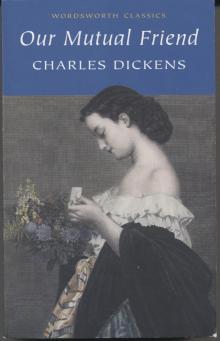 Our Mutual Friend
Our Mutual Friend_preview.jpg) The Posthumous Papers of the Pickwick Club, v. 1 (of 2)
The Posthumous Papers of the Pickwick Club, v. 1 (of 2)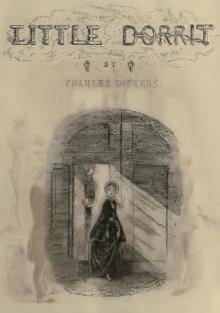 Little Dorrit
Little Dorrit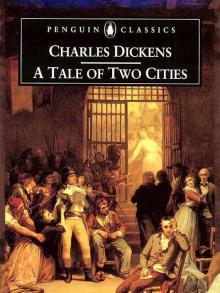 A Tale of Two Cities
A Tale of Two Cities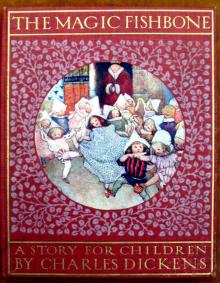 The Magic Fishbone
The Magic Fishbone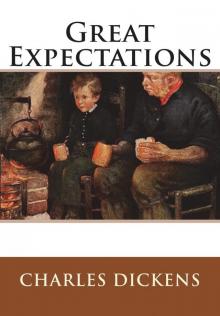 Great Expectations
Great Expectations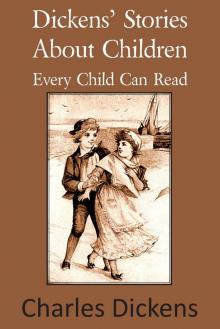 Dickens' Stories About Children Every Child Can Read
Dickens' Stories About Children Every Child Can Read A Christmas Carol
A Christmas Carol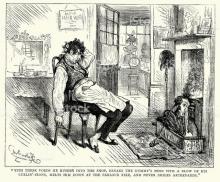 Master Humphrey's Clock
Master Humphrey's Clock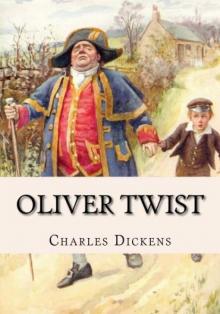 Oliver Twist
Oliver Twist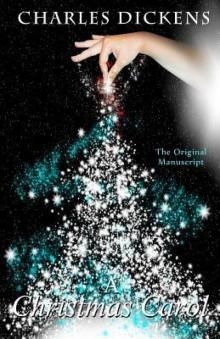 A Chrismas Carol
A Chrismas Carol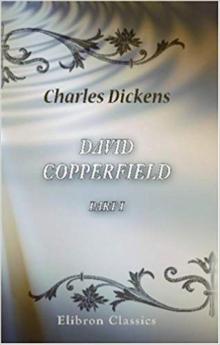 David Copperfield
David Copperfield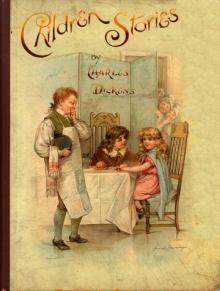 Charles Dickens' Children Stories
Charles Dickens' Children Stories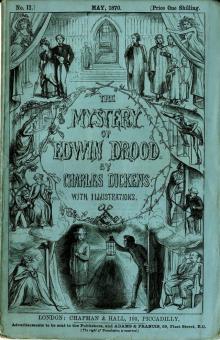 The Mystery of Edwin Drood
The Mystery of Edwin Drood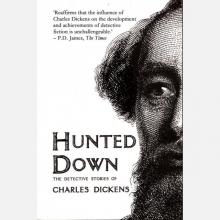 Hunted Down: The Detective Stories of Charles Dickens
Hunted Down: The Detective Stories of Charles Dickens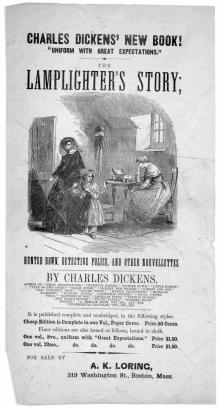 The Lamplighter
The Lamplighter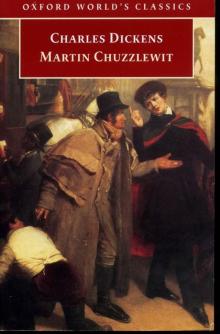 Martin Chuzzlewit
Martin Chuzzlewit_preview.jpg) The Posthumous Papers of the Pickwick Club, v. 2 (of 2)
The Posthumous Papers of the Pickwick Club, v. 2 (of 2)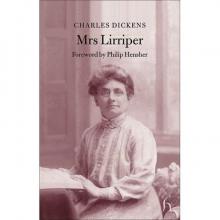 Mrs. Lirriper's Legacy
Mrs. Lirriper's Legacy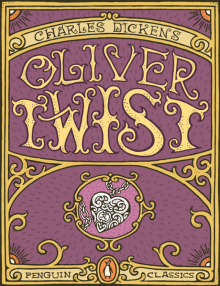 Captain Boldheart & the Latin-Grammar Master
Captain Boldheart & the Latin-Grammar Master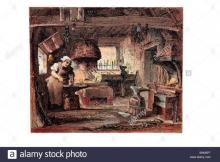 Barnaby Rudge: A Tale of the Riots of 'Eighty
Barnaby Rudge: A Tale of the Riots of 'Eighty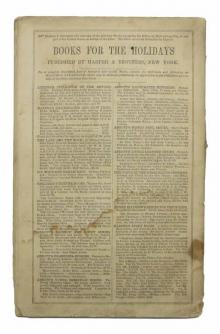 Mrs. Lirriper's Lodgings
Mrs. Lirriper's Lodgings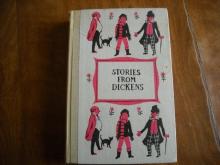 Stories from Dickens
Stories from Dickens The Mudfog Papers
The Mudfog Papers Bardell v. Pickwick
Bardell v. Pickwick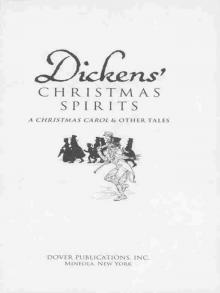 Dickens' Christmas Spirits
Dickens' Christmas Spirits A Christmas Carol, the Chimes & the Cricket on the Hearth
A Christmas Carol, the Chimes & the Cricket on the Hearth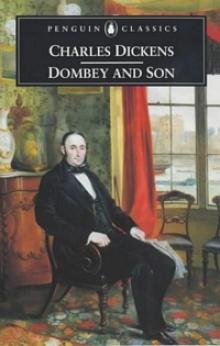 Dombey and Son
Dombey and Son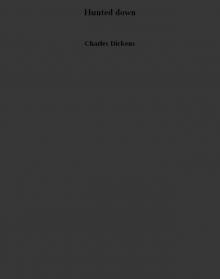 Hunted down
Hunted down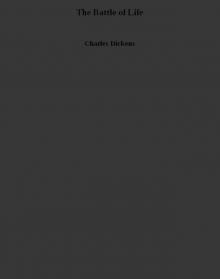 The Battle of Life
The Battle of Life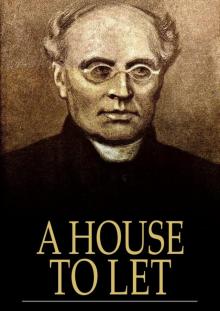 A House to Let
A House to Let Works of Charles Dickens (200+ Works) The Adventures of Oliver Twist, Great Expectations, A Christmas Carol, A Tale of Two Cities, Bleak House, David Copperfield & more (mobi)
Works of Charles Dickens (200+ Works) The Adventures of Oliver Twist, Great Expectations, A Christmas Carol, A Tale of Two Cities, Bleak House, David Copperfield & more (mobi)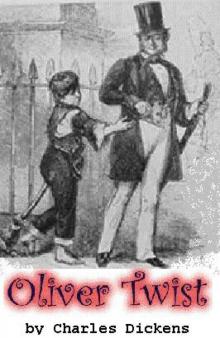 The Adventures of Oliver Twist
The Adventures of Oliver Twist The Charles Dickens Christmas MEGAPACK™
The Charles Dickens Christmas MEGAPACK™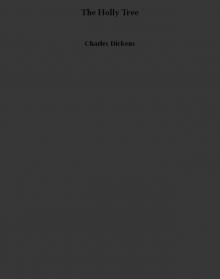 The Holly Tree
The Holly Tree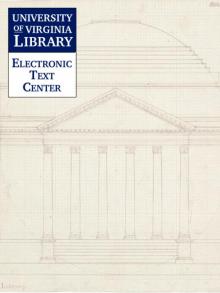 The Haunted Man and the Ghost`s Bargain
The Haunted Man and the Ghost`s Bargain Life And Adventures Of Martin Chuzzlewit
Life And Adventures Of Martin Chuzzlewit A Message From the Sea
A Message From the Sea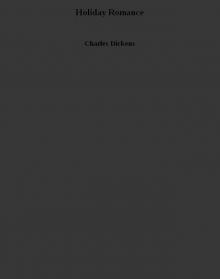 Holiday Romance
Holiday Romance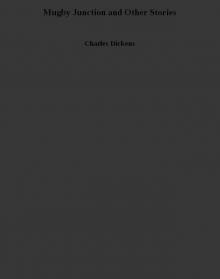 Mugby Junction and Other Stories
Mugby Junction and Other Stories Sunday Under Three Heads
Sunday Under Three Heads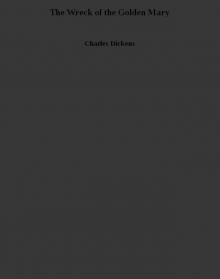 The Wreck of the Golden Mary
The Wreck of the Golden Mary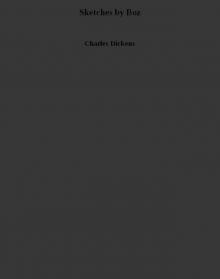 Sketches by Boz
Sketches by Boz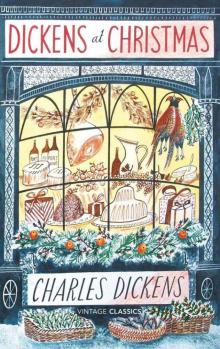 Dickens at Christmas (Vintage Classics)
Dickens at Christmas (Vintage Classics) All The Year Round
All The Year Round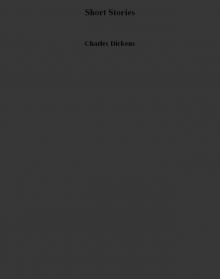 Short Stories
Short Stories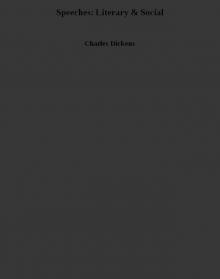 Speeches: Literary & Social
Speeches: Literary & Social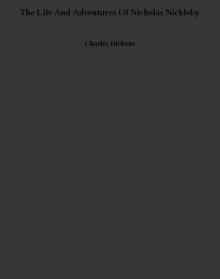 The Life And Adventures Of Nicholas Nickleby
The Life And Adventures Of Nicholas Nickleby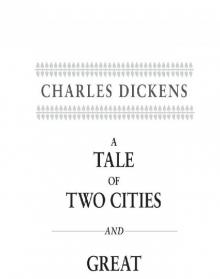 A Tale of Two Cities and Great Expectations (Oprah's Book Club)
A Tale of Two Cities and Great Expectations (Oprah's Book Club)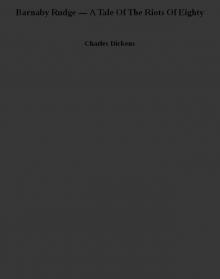 Barnaby Rudge — A Tale Of The Riots Of Eighty
Barnaby Rudge — A Tale Of The Riots Of Eighty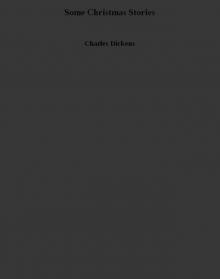 Some Christmas Stories
Some Christmas Stories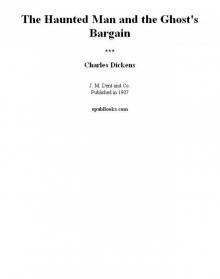 The Haunted Man and the Ghost's Bargain tc-5
The Haunted Man and the Ghost's Bargain tc-5 The Charles Dickens Christmas Megapack
The Charles Dickens Christmas Megapack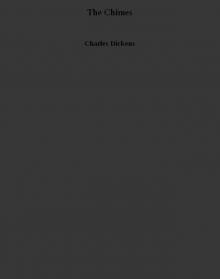 The Chimes
The Chimes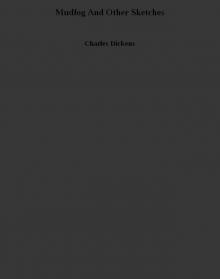 Mudfog And Other Sketches
Mudfog And Other Sketches Miscellaneous Papers
Miscellaneous Papers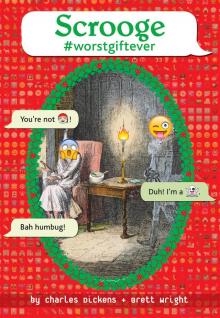 Scrooge #worstgiftever
Scrooge #worstgiftever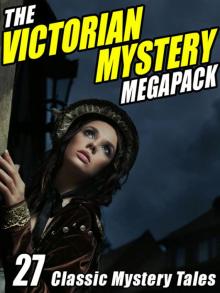 The Victorian Mystery Megapack: 27 Classic Mystery Tales
The Victorian Mystery Megapack: 27 Classic Mystery Tales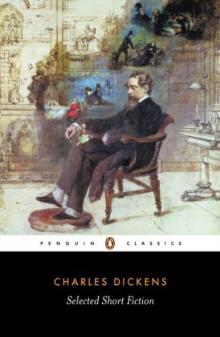 Selected Short Fiction
Selected Short Fiction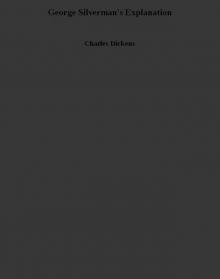 George Silverman's Explanation
George Silverman's Explanation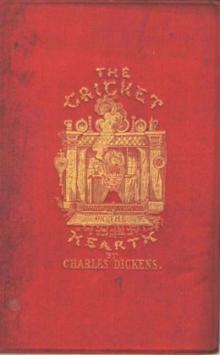 The Cricket on the Hearth c-3
The Cricket on the Hearth c-3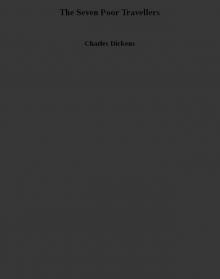 The Seven Poor Travellers
The Seven Poor Travellers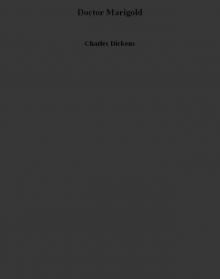 Doctor Marigold
Doctor Marigold Three Ghost Stories
Three Ghost Stories